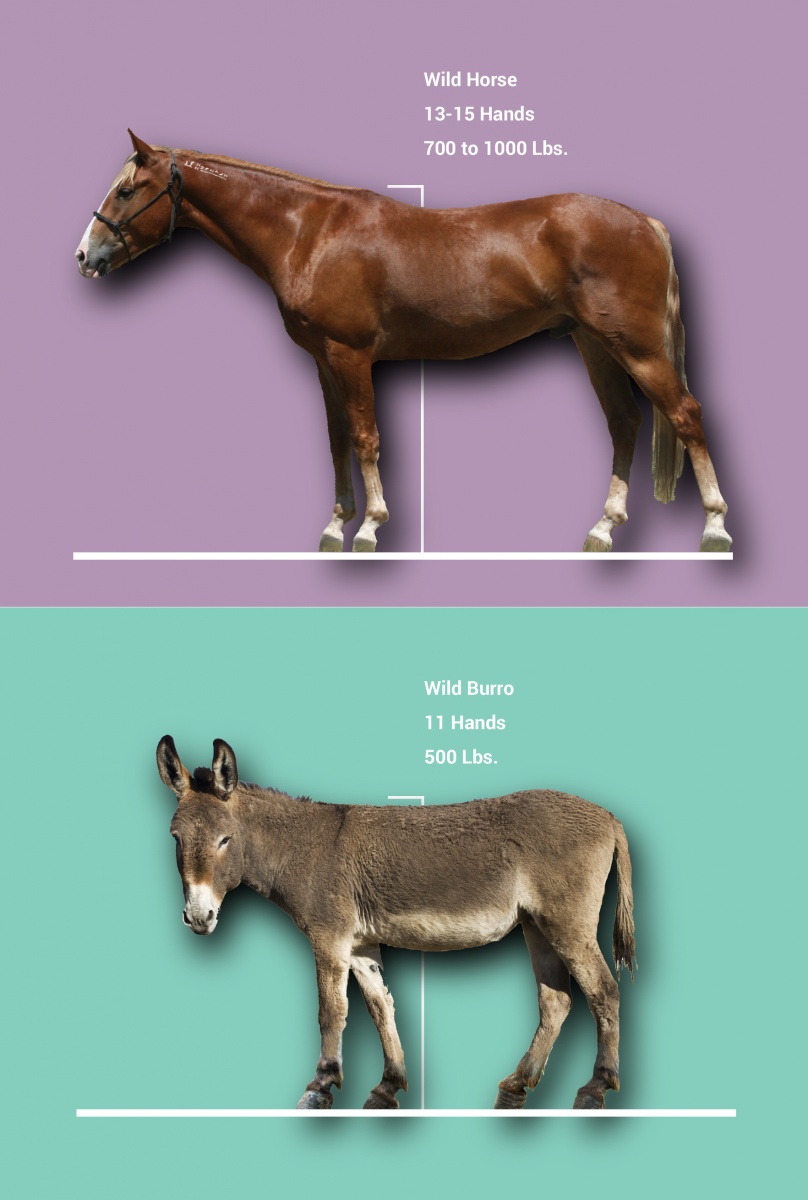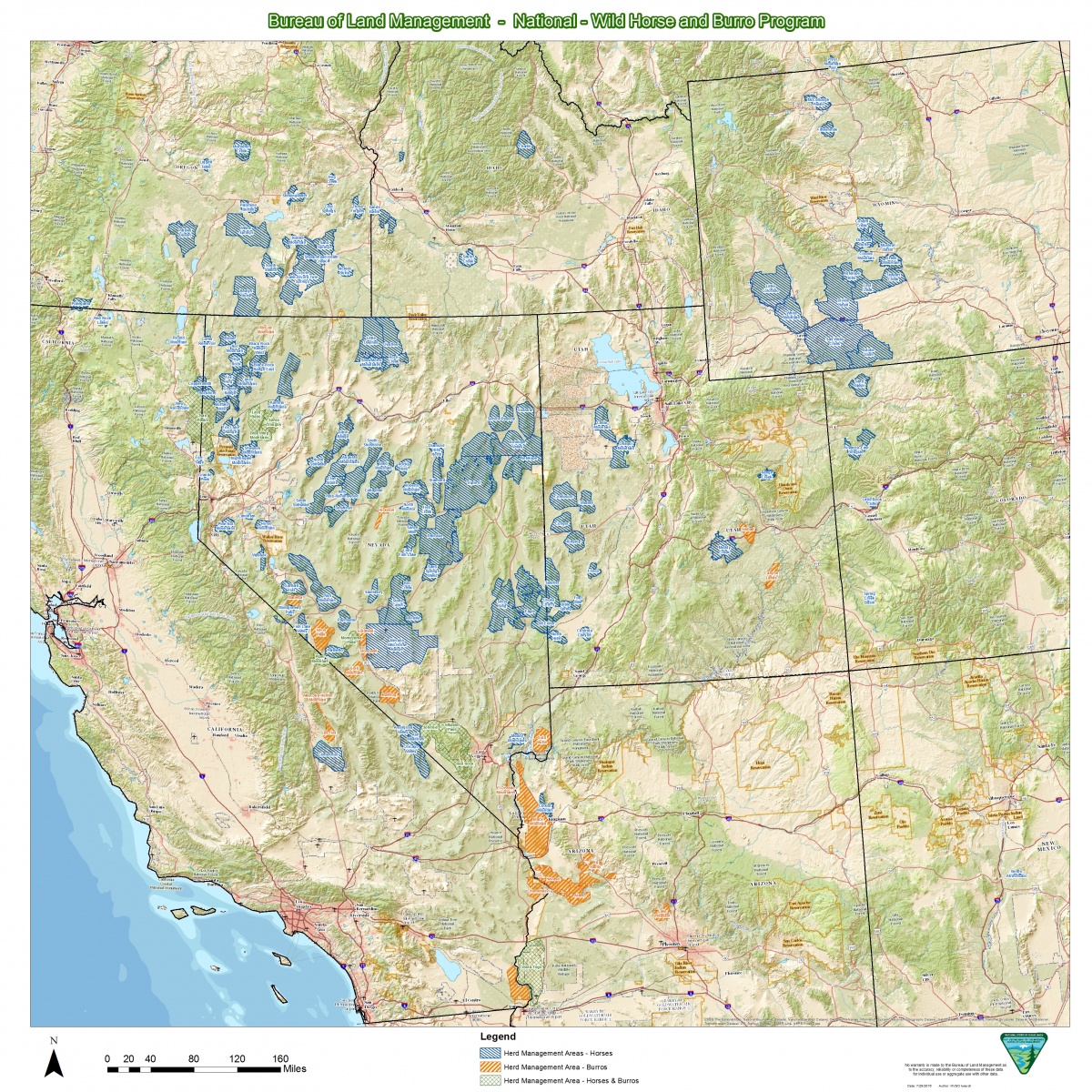About Wild Horses and Burros
Wild horses and burros are defined by federal law as unbranded, unclaimed, free-roaming horses or burros found on public lands in the United States. Today, the Bureau of Land Management protects and manages wild horses and burros in balance with other public resource values on 175 herd management areas across 25.6 million acres of public lands. Most wild horses and burros living today are descendants of animals that were released or escaped from Spanish explorers, ranchers, miners, the U.S. Cavalry and Native Americans.
Wild horses and burros are diverse in their coloring, ranging from solid brown and black to colorful pintos and palominos. Most wild horses stand 13 to 15 hands high (52-60 inches) and weigh from 700 to 1,000 pounds. Wild burros average 11 hands high (44 inches) and weigh about 500 pounds.

Wild, free-roaming wild horses can be found on public lands across 10 western states. Wild burros roam rangeland in California, Nevada, Arizona, Utah and Oregon. Pursuant to the Wild Free-Roaming Horses and Burros Act, the BLM and U.S. Forest Service manage wild horses on subsets of public lands where the animals were found upon passage of the Act in 1971. These areas are known as Herd Management Areas.

Wild horses and burros are known for their sure-footedness, strength, intelligence and endurance. With kindness and patience, these animals can be trained for many uses. Learn how to adopt or purchase a wild horse or burro.
